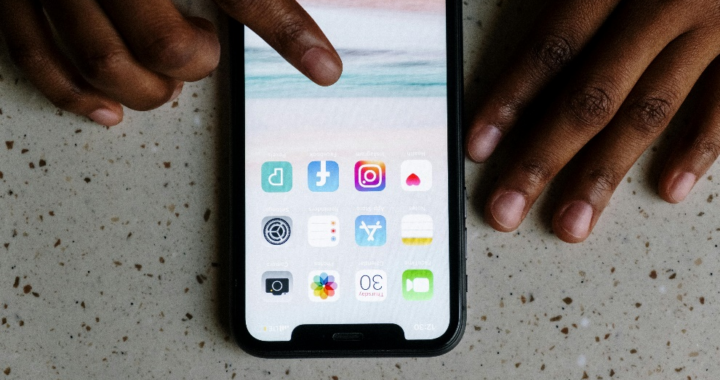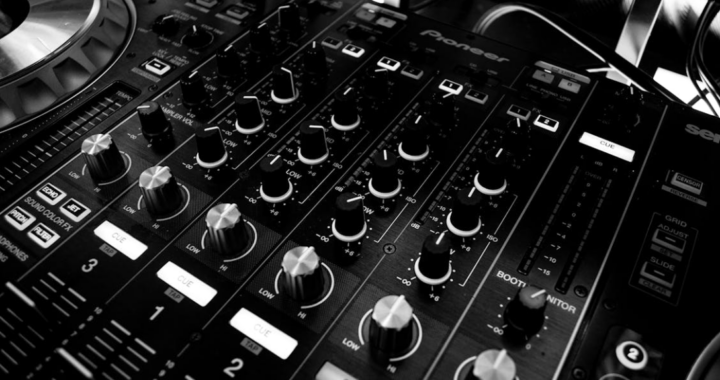The rapid expansion of cloud computing has revolutionized how businesses and individuals store and access data. While cloud services offer convenience and scalability, they also present new challenges for law enforcement and cybersecurity professionals. Cybercriminals increasingly exploit cloud environments to commit fraud, data breaches, and other digital crimes. This has led to the rise of cloud forensics, a specialized field dedicated to investigating crimes in virtual spaces.
Understanding Cloud Forensics
Cloud forensics is a branch of digital forensics that focuses on investigating, identifying, and analyzing digital evidence within cloud environments. Unlike traditional digital forensics, which deals with local storage and on-premises networks, cloud forensics must address remote data storage, shared resources, and multi-jurisdictional legal issues.
A digital forensic consultant plays a crucial role in conducting cloud investigations, ensuring data integrity, and providing expert analysis of cyber incidents. Their work involves reconstructing events, identifying perpetrators, and ensuring evidence meets legal standards.
The Challenges of Cloud Forensics
Investigating cybercrimes in cloud environments presents unique challenges, including:
- Data Volatility and Accessibility
Cloud data is often dynamic, with files continuously modified, deleted, or overwritten. Unlike physical hard drives, where forensic experts can create an exact copy for analysis, cloud storage operates on distributed networks, making it harder to retrieve previous data states.
- Jurisdictional and Legal Barriers
Cloud providers operate globally, which can create conflicts when investigating crimes. Data stored on servers in different countries is subject to varying privacy laws and regulations. A digital forensic consultant must navigate these legal complexities to acquire data legally while preserving its admissibility in court.

- Lack of Direct Control
Traditional digital forensics involves seizing physical devices for examination. In cloud environments, the data is controlled by third-party providers. Investigators must rely on expert witness testimony to establish the reliability and authenticity of data acquired from cloud sources.
- Encryption and Privacy Protections
Many cloud services employ end-to-end encryption to protect user data. While encryption enhances security, it can also hinder forensic investigations by limiting access to critical evidence. Advanced decryption techniques and audio authentication services are often required to analyze encrypted communications or voice recordings stored in the cloud.
Key Tools and Techniques in Cloud Forensics
To overcome these challenges, cloud forensic professionals utilize specialized tools and methodologies to gather and analyze evidence effectively.
- Log Analysis and Metadata Extraction
Cloud service providers maintain logs of user activities, file modifications, and access attempts. Investigators analyze these logs to trace unauthorized access, data exfiltration, and suspicious activities.
- Snapshot and Backup Recovery
Many cloud platforms offer automated backups and system snapshots. Forensic analysts retrieve these backups to reconstruct past activities, identify deleted files, and assess security breaches.
- Machine Learning for Anomaly Detection
Advanced AI-driven forensic tools help detect anomalies in cloud environments. These tools analyze vast datasets to identify patterns indicative of cybercrime, such as unauthorized login attempts or sudden spikes in data transfers.
- Audio and Video Authentication
With the increasing use of multimedia content in cloud storage, audio authentication services play a critical role in verifying voice recordings used in criminal investigations. Experts analyze metadata, voice patterns, and background noise to confirm authenticity and detect tampering.
- Blockchain-Based Evidence Integrity
To ensure evidence integrity, cloud forensic professionals increasingly rely on blockchain technology. By recording forensic findings on an immutable ledger, investigators can prevent evidence tampering and provide transparent audit trails for legal proceedings.

The Role of Expert Witness Testimony in Cloud Forensics
In cybercrime cases, forensic findings must be presented in court with clarity and credibility. Expert witness testimony is crucial in explaining complex technical details to judges, attorneys, and juries. A digital forensic consultant serves as an expert witness by:
- Presenting forensic evidence in a legally defensible manner.
- Explaining cloud computing concepts and forensic methodologies.
- Validating the authenticity of digital evidence.
- Defending forensic findings against cross-examination.
Expert witnesses also help shape legal precedents by contributing insights on emerging cyber threats, encryption practices, and data handling standards.
The Future of Cloud Forensics
As cloud technology evolves, so too will forensic investigation techniques. Several trends are shaping the future of cloud forensics:
- Integration of AI and Automation
AI-powered forensic tools will enhance investigative efficiency by automating data collection, correlation, and anomaly detection. Automation will also reduce the time required to analyze large-scale cloud datasets.
- Enhanced Collaboration Between Law Enforcement and Cloud Providers
Stronger partnerships between law enforcement agencies and cloud service providers will improve data accessibility for forensic investigations. Compliance frameworks will continue to evolve to balance user privacy with law enforcement needs.
- Advancements in Cross-Border Data Sharing
International agreements, such as the CLOUD Act, will play a crucial role in facilitating cross-border digital investigations. These agreements will help forensic teams access data stored in foreign jurisdictions while adhering to global privacy regulations.
- Improved Encryption Analysis Techniques
As encryption technologies become more sophisticated, forensic analysts will need advanced decryption methods, including quantum computing-assisted cryptanalysis, to access encrypted evidence legally and ethically.
- Greater Use of Cloud Forensicsin Corporate Investigations
Beyond criminal cases, cloud forensics will become essential in corporate security, fraud detection, and insider threat investigations. Organizations will increasingly rely on forensic experts to ensure compliance with cybersecurity regulations and mitigate data breaches.

Emerging Threats in Cloud Environments
As businesses and individuals continue shifting to cloud-based solutions, cybercriminals adapt their strategies to exploit vulnerabilities. Some of the most pressing threats in cloud environments include:
- Ransomware-as-a-Service (RaaS)
Cybercriminals now leverage cloud infrastructure to deploy ransomware attacks at scale. Attackers encrypt cloud-stored data and demand ransom payments, leaving organizations with limited recovery options if they lack secure backups.
- Insider Threats and Privilege Misuse
Not all cyber threats originate externally. Employees with privileged access can misuse their credentials to steal data or sabotage cloud systems. Proper monitoring and forensic analysis help detect unauthorized activities before they cause significant damage.
- Supply Chain Attacks
Many organizations rely on third-party vendors for cloud services. Attackers exploit vulnerabilities in these providers to gain access to sensitive client data, making forensic investigations crucial in tracing the origins of such breaches.
The Role of Cloud Forensics in Compliance and Regulatory Investigations
Regulatory compliance is a major concern for businesses operating in the cloud. Forensic investigations play a vital role in ensuring organizations adhere to data protection laws such as:
- General Data Protection Regulation (GDPR)
Organizations handling EU citizens’ data must comply with GDPR guidelines. Cloud forensic experts help verify compliance by analyzing data access logs, breach incidents, and encryption policies.
- Health Insurance Portability and Accountability Act (HIPAA)
Healthcare providers using cloud-based electronic health records (EHRs) must protect patient data. Cloud forensics aids in investigating data breaches to determine whether sensitive medical records were exposed.
- Financial Industry Regulatory Authority (FINRA) Compliance
Financial institutions leveraging cloud solutions must ensure transaction records remain intact. Digital forensic consultants assist in audits by verifying the authenticity of financial data stored in the cloud.

Digital Forensic Consultant: The Key to Cloud Investigations
A digital forensic consultant brings specialized expertise in cloud investigations. Their responsibilities include:
- Conducting forensic analysis on cloud platforms to uncover cyber threats.
- Assisting businesses in responding to security incidents effectively.
- Providing expert witness testimonyin court to validate digital evidence.
- Collaborating with law enforcement to track down cybercriminals.
Their role is increasingly critical as cloud environments become the primary target for cyberattacks.
The rise of cloud computing has transformed digital investigations, requiring specialized expertise in cloud forensics to combat cybercrime effectively. As threats continue to evolve, forensic professionals must stay ahead by adopting cutting-edge tools, ensuring legal compliance, and providing expert witness testimony in legal proceedings. The future of cloud forensics lies in automation, AI-driven investigations, and stronger global collaboration, ensuring a secure digital environment for all users.
At Eclipse Forensics, we specialize in cloud forensics, helping businesses, legal teams, and law enforcement uncover critical digital evidence in virtual environments. Our digital forensic consultants use advanced techniques to analyze cloud data, recover lost files, and verify evidence integrity. We also offer audio authentication services to detect tampering and ensure the credibility of voice recordings. Whether you need expert analysis or expert witness testimony for legal proceedings, our team provides accurate, court-admissible findings. Trust Eclipse Forensics to deliver cutting-edge forensic solutions that stand up to scrutiny. Contact us today to safeguard your digital investigations!































